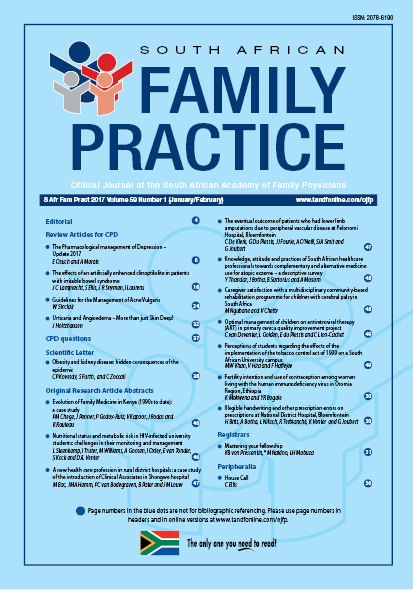Illegible handwriting and other prescription errors on prescriptions at National District Hospital, Bloemfontein
Keywords:
digital pen, errors, handwriting, prescriptions, reading
Abstract
Background: It is generally accepted that doctors have illegible handwriting. The writer usually knows what is written, but other parties often have problems with reading and interpreting. Aim: The aim of the study was to determine whether illegible doctors’ handwriting and other factors that can lead to dispensing errors occur on prescriptions at National District Hospital. Method: In part one the prescriptions of 20 doctors were read by five doctors, nurses and pharmacists to detect who could read it most accurately. In part two, these doctors were asked to write a prescription with an IntelliPen®. Results: From the 300 measurements, 88% of the doctors read the prescriptions correctly, compared with 82% of the nurses and 75% of the pharmacists. A potential fatal error was lorazepam injection 4 mg, which was read as 40 mg (lethal dose) by 20% of healthcare workers (HCWs). With the IntelliPen® only 39% of the prescriptions were readable. Only 65% of prescribers could be identified from their handwriting or the name stamp used. Conclusion: Pharmacists read the prescriptions worst and they are the people who must dispense the prescriptions. Some of the reading mistakes were critical and could be lethal. Many of the prescriptions did not meet the legal requirement for prescriptions. (Full text of the research articles are available online at www.medpharm.tandfonline.com/ojfp) S Afr Fam Pract 2017; DOI: 10.1080/20786190.2016.1254932
Section
Original Research
By submitting manuscripts to SAFP, authors of original articles are assigning copyright to the South African Academy of Family Physicians. Copyright of review articles are assigned to the Publisher, Medpharm Publications (Pty) Ltd, unless otherwise specified. Authors may use their own work after publication without written permission, provided they acknowledge the original source. Individuals and academic institutions may freely copy and distribute articles published in SAFP for educational and research purposes without obtaining permission.

